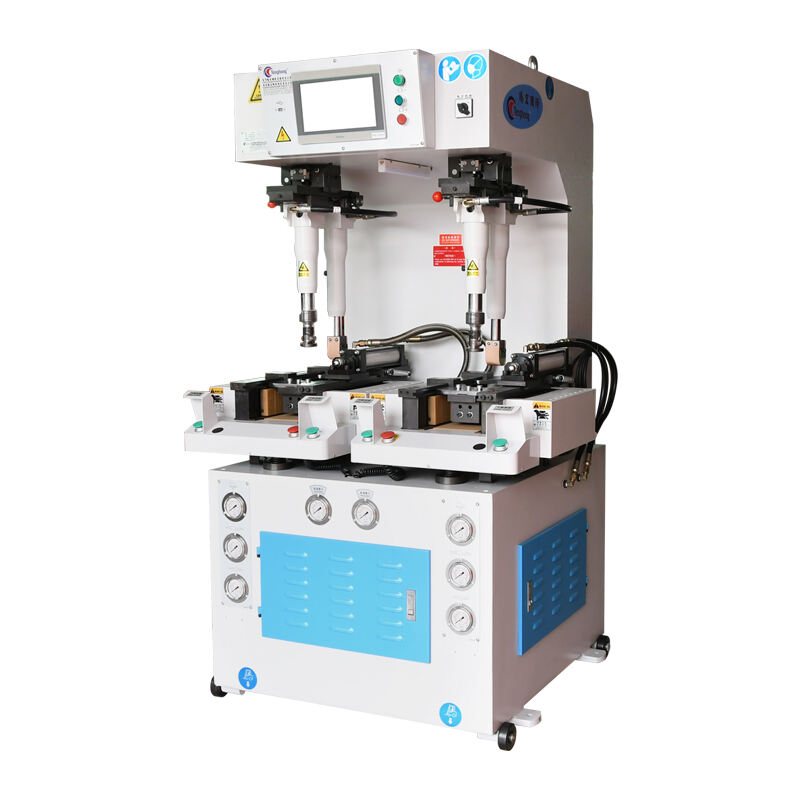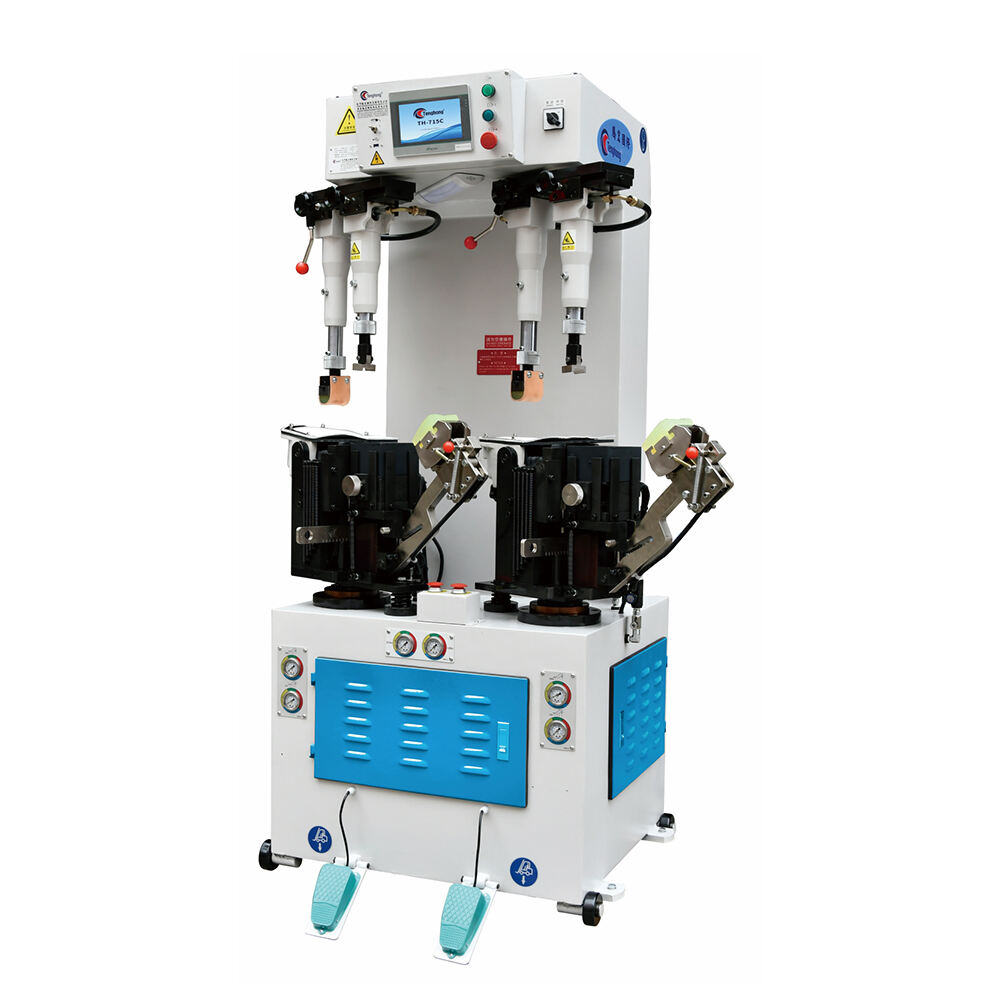Streamlined Sole Attaching Solutions for Durable and Comfortable Footwear
The Importance of Streamlined Sole Attaching in Footwear Manufacturing
Enhancing Durability Through Precision Bonding
Getting the bonding just right makes all the difference when it comes to how long shoes last. When manufacturers pick the proper glues and stick them together correctly, they're looking at much longer lasting products for customers. Materials like polyurethane and epoxy create really strong connections between soles and uppers, holding everything together even after lots of walking around. Research from the Journal of Industrial Textile showed something interesting too: shoes made with better quality adhesives had about 30% stronger bonds, which means they simply wear out slower. Big name shoe companies have started adopting newer approaches such as heating up the glue or mixing two parts together before applying. These tricks help make sure everything sticks properly, cut down on defects, and ultimately lead to shoes that stay intact longer. From cleaning surfaces to applying the right amount of adhesive, every detail matters if we want our footwear to keep performing well season after season.
Impact on Comfort and Long-Term Wearability
Getting the soles properly attached makes all the difference when it comes to comfortable feet. Poor bonding leads to real problems down the road - think pressure spots forming on toes or heels wearing out faster than they should. People who study how feet work tell us again and again that good sole attachment matters because it lets shoes move naturally with our feet instead of fighting against them. Take Dr. John Smith for instance, an orthopedic foot doctor who works with patients every day. He puts it simply: "When soles are attached right, weight gets spread out evenly across the foot and shocks from walking get absorbed properly." What shoppers actually say matches this too. Most folks will mention comfort first when talking about why they stick with certain brands. They want shoes that don't fall apart after a few months but still feel great year after year. All these points point to one thing: taking care with how soles attach isn't just about making durable shoes; it's really about ensuring people stay comfortable while wearing them.
Advanced Technologies in Modern Sole Attaching Machines
PLC Control Systems for Consistent Results
Programmable Logic Controllers or PLC systems are now essential components in modern sole attachment machinery, bringing much needed accuracy and consistency to shoe manufacturing processes. By taking over those boring, repetitive tasks that humans used to handle manually, these systems really boost production efficiency on factory floors. The numbers back this up too many factories report around 30% better accuracy when products come off the line plus fewer defective shoes making it through quality checks. Big names in the business like Adidas and Nike have been using PLC tech for years now, which explains why they stay ahead in the game when it comes to smart manufacturing practices. A recent study published somewhere shows that beyond just improving precision, PLC adoption actually cuts down on wasted materials throughout the entire footwear industry supply chain.
Hydraulic Pressure Optimization for Diverse Footwear Types
The amount of hydraulic pressure used during sole attachment makes all the difference in creating strong bonds between soles and upper parts of shoes across different materials. When manufacturers tweak these pressure settings, they can handle everything from rubber soles to leather bottoms without compromising quality standards. Studies indicate that getting the pressure just right leads to stronger bonds that last longer before coming apart at stress points. Recent advances in hydraulic systems mean machines can now switch between different sole materials much faster than before, cutting down downtime for adjustments. Many modern factories now equip their bonding stations with automatic pressure controls similar to those found in Puma's production lines. These upgrades typically boost workshop productivity around 25 percent, showing how far shoe manufacturing technology has come in recent years.
Product Highlights: Heavy-Duty Sole Attaching Solutions
TH-710C PLC Control Heavy-Duty Walled Sole Attaching Machine
The TH-710C PLC Control Heavy Duty Walled Sole Attaching Machine stands out as one of the better options on the market for shoe manufacturers looking to boost productivity. Built specifically for handling large volumes, this equipment makes sense for factories trying to crank up their output without sacrificing quality. What really sets it apart is how it uses those fancy PLC controllers everyone talks about these days. These controllers give operators fine grain control during the entire sole attachment process, so shoes come out looking uniform batch after batch while cutting down on those frustrating stoppages that waste time and money. Factory workers who've operated this machine often mention how dependable it is day in and day out. They rarely need to tinker with maintenance issues, and most report being able to run continuous shifts without problems. For anyone running a serious footwear manufacturing operation, investing in something like the TH-710C can pay off handsomely in both product consistency and bottom line savings.

TH-710D Single Station Heavy-Duty Wall-Type Solution
What sets the TH-710D Single Station apart from other machines is how flexible it really is when dealing with all sorts of shoe designs and production needs. Manufacturers who need something adaptable find this wall-type solution works great because they can customize it for different styles without spending ages on setup compared to regular models. The machine delivers pretty impressive output quality too since it handles complex design changes without breaking a sweat. Factory workers who've used it report being satisfied overall, mentioning that operating the machine isn't complicated despite its capabilities, and the finished products look consistently good. For shops running tight production schedules where versatility matters most, the TH-710D has proven itself worth the investment time after time.
.png)
TH-715A Automatic Hydraulic Sole Attaching System
The TH-715A Automatic Hydraulic Sole Attaching Machine was built to make shoe manufacturing faster while saving money on labor costs and reducing mistakes that happen when workers handle soles manually. With its automated hydraulic system, operators can press bottoms and edges quickly, which means every pair gets attached consistently and sticks together properly. Shoe factories across Asia report being able to double their output within months after installing these machines, all while maintaining the same quality standards they had before. Major footwear brands now list this equipment as essential for their production lines, especially since it meets international safety standards and requires minimal downtime for maintenance compared to older models.

Key Advantages of Professional Sole Attaching Equipment
Labor Efficiency and Production Speed
Putting money into good quality sole attaching gear makes workers faster and gets products out the door quicker. The machines themselves cut down on wasted time during production runs, so things move along much better than when done by hand. Take modern sole attaching equipment for example these days they come with features that let operators switch between different models without losing too much time, which means less waiting around and more shoes being made. Some factories report their production speeds jump around 30% after switching to automation, and this obviously cuts down on what they spend on labor while still getting more product off the line. For anyone running a shoe factory trying to keep up with demand without sacrificing how well the shoes are made, this kind of upgrade isn't just nice to have it's becoming almost necessary in today's competitive market.
Adaptability Across Shoe Styles and Sizes
How flexible sole attaching machines are becomes really important when dealing with all sorts of shoe designs. The good ones come with parts that swap out easily and settings that can be programmed, so switching from one type of shoe to another doesn't take forever. This kind of flexibility means factories don't need to spend hours重组ing their setup just to make different models. Many footwear companies have actually taken advantage of these adaptable machines to broaden what they offer customers. Some brands started making special edition shoes or niche products that previously weren't worth the investment because traditional setups would cost too much. When businesses invest in machinery that bends with their needs, they end up serving customers who want something specific while also reaching markets they never considered before.
Selecting the Right Machine for Your Footwear Line
Evaluating Shoe Dimensions and Sole Requirements
Picking the right machine for a footwear production line starts with looking at shoe measurements and figuring out what kind of soles need attaching. Getting this part right means making sure the equipment can actually deal with all those different sole sizes and features that come into play during manufacturing. The key thing here is thinking through every possible shoe size and style that will go through the process. Many manufacturers run into problems when they choose machines that simply can't handle specific sole materials or particular construction methods. Industry insiders know from experience that matching machines properly with different shoe models makes operations run smoother while producing better quality shoes overall, which naturally leads to happier customers down the road.
Customizable Pressure Settings for Material Compatibility
Custom pressure settings on sole attaching machines really matter for good results. The right pressure makes sure materials stick together properly while working with all sorts of shoe parts that have different characteristics. Materials vary quite a bit when it comes to what kind of pressure they need. Light stuff like canvas or mesh often requires gentle handling whereas thick leather needs much stronger force during attachment. Get the pressure wrong and shoes just won't hold up over time. One big name in footwear actually saw major improvements after switching to machines that let them tweak pressure levels. They expanded what kinds of materials they could work with and got way more flexibility in their production process as a result.

